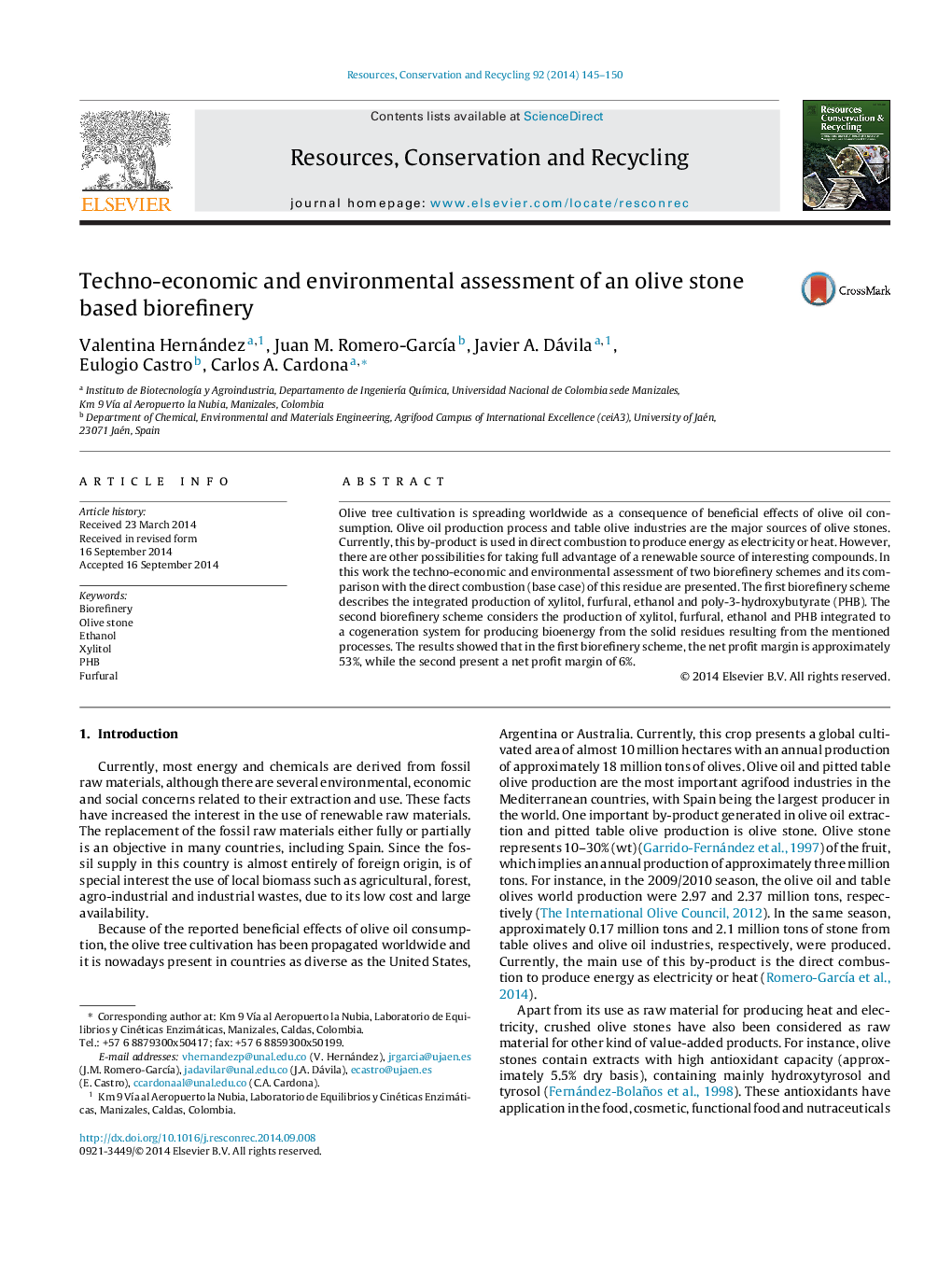| Article ID | Journal | Published Year | Pages | File Type |
|---|---|---|---|---|
| 7495362 | Resources, Conservation and Recycling | 2014 | 6 Pages |
Abstract
Olive tree cultivation is spreading worldwide as a consequence of beneficial effects of olive oil consumption. Olive oil production process and table olive industries are the major sources of olive stones. Currently, this by-product is used in direct combustion to produce energy as electricity or heat. However, there are other possibilities for taking full advantage of a renewable source of interesting compounds. In this work the techno-economic and environmental assessment of two biorefinery schemes and its comparison with the direct combustion (base case) of this residue are presented. The first biorefinery scheme describes the integrated production of xylitol, furfural, ethanol and poly-3-hydroxybutyrate (PHB). The second biorefinery scheme considers the production of xylitol, furfural, ethanol and PHB integrated to a cogeneration system for producing bioenergy from the solid residues resulting from the mentioned processes. The results showed that in the first biorefinery scheme, the net profit margin is approximately 53%, while the second present a net profit margin of 6%.
Related Topics
Physical Sciences and Engineering
Energy
Renewable Energy, Sustainability and the Environment
Authors
Valentina Hernández, Juan M. Romero-GarcÃa, Javier A. Dávila, Eulogio Castro, Carlos A. Cardona,
